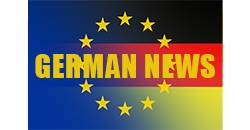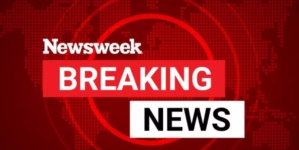-
FanDuel Promo Code: New NFL Bettors Get $200 Bonus, Sunday Ticket Deal - 31 mins ago
-
Mother of Georgia Suspect Called School Minutes Before Shooting, Family Says - 35 mins ago
-
Active Shooter on I-75 in Kentucky, Numerous Victims Reported - about 1 hour ago
-
At the U.S. Open, Hourly-Wage Ushers Corral the Well-Heeled Crowds - about 1 hour ago
-
Bet365 Bonus Code WEEK365: Choose $200 Bonus or $1K Safety Net for NFL - 2 hours ago
-
Mr. Greedy, an African Penguin With 230 Descendants, Dies at 33 - 2 hours ago
-
5 Rookies Who Will Stand Out in Week 1 of NFL Season - 2 hours ago
-
Harris Targets Trump on Abortion in Latest Campaign Ad - 3 hours ago
-
Denny Hamlin NASCAR Nightmare As Driver Hits Powertrain Issues During Qualifying - 3 hours ago
-
Video of Kamala Harris Embracing Crying Woman Takes Off Online - 3 hours ago
Opinion | It’s Easter 2050. Here’s What American Religion Looks Like.
Another Easter, another survey showing religion’s recent ebb: This one is from Gallup, confirming a deepening of the 21st-century decline in church attendance.
But diminishment coexists with transformation. The kind of Christian practice that’s likely to endure and thrive as loosely affiliated church members fall away isn’t the kind we associate with the flood tide of American Christianity 60 years ago. Meanwhile, the main alternative to traditional religion, a faith in secular progress, has entered into its own crisis of commitment and belief, with mysticism creeping back in around secularism’s edges.
So let’s try to imagine how these trends might shape American religion a generation hence. Clearly the old order of Protestant denominationalism, Methodists and Presbyterians and Episcopalians clustering around the city green, no longer defines our religious life. In its place, what alignments are taking shape? How might an American in 2050 describe the country’s key religious groups?
Let’s imagine such a description. Start with a group we’ll call the neotraditionalists. These are liturgical and doctrinally conservative Christians, with a Roman Catholic core orbited by some Reformation factions, Calvinists especially, as well as some Eastern Orthodox churches, small but flush with converts.
The “neo” as well as the “traditionalist” matters. These believers have created, rather than inherited, their conservative culture. Generally they are highly educated and upwardly mobile, though their tendency to have large families limits that mobility. The stereotypical neo-trad lives around a city or college town in a conservative state and sends her kids to one of the ever-expanding network of classical high schools. But there are important neo-trad subcultures in big liberal cities, supplying the behind-the-scenes leadership — judges, administrators, wonks — for whatever kind of political conservatism exists in 2050.
Next, we have a larger group, the mere Christians. These are Americans we would call ex-evangelical or nondenominational Protestant today, but terms like “denomination” and “Protestant” seem quaint in our imagined 2050 and even “evangelical” is falling into abeyance. Instead most people in this category just identify as Christians, while attending churches with names like Elevate and Rise and Resurrection — institutions that are theologically conservative, but not doctrinally intense and not liturgical at all.
The mere Christians are middle class and suburban, with fewer advanced degrees and extra kids than the neotrads and more multiracial congregations. At one edge their category blurs into Pentecostalism; at another into churches that are technically still part of a denominational structure but don’t advertise as such: “The Galilee Initiative” in big letters, “a Southern Baptist community” in tiny ones.
Next up, the liberal Christians. For generations the more liberal-leaning Protestant denominations have been declining. But liberal Christianity is a renewable resource, as long as there are conservative Christianities to inspire rebellion and disillusionment.
The question is what liberal faith’s institutional form looks like in 2050. Maybe a liberal Catholicism that’s short on priests but enduring under lay leadership. Maybe a liberal form of nondenominational Christianity built by the heirs of today’s disillusioned “ex-vangelicals.” Maybe a Mainline Protestantism that’s survived through consolidation, with former Episcopalians and Methodists and Congregationalists clustered together in a United Progressive Church.
Then, the all-American pagans. This is a catchall for the emergent post-Christian forms of religious faith — via New Age spirituality, astrology, U.F.O. fascinations, meditation and mind-altering drugs, magic and witchcraft, intellectual pantheism and old-school polytheism and even Satanism.
These experiments won’t have a singular institutional expression in 2050. But together they will be seen as a major American religion, not just a minor tendency or impulse — potent in today’s most secular regions (the Pacific Northwest, New England), supplying spiritual scripts for a lot of political progressives, infusing weird metaphysics into Silicon Valley’s A.I. and technofuturist visions.
Then, the fast-growing outsiders. These are smaller groups that because of geographic concentration and high fertility seem increasingly important. The Mormons would be the obvious example, though their fertility advantage has diminished a bit. The Amish are another: By the 2050s their population may be shooting past a million. Orthodox Jews will probably outnumber their Reform and Conservative brethren. And whichever form of Islam manages the ordeal of assimilation in America could have a similar trajectory.
Finally, a wild card: the intelligentsia. For a century or more the American intellectual classes have been much more unbelieving than the country as a whole. Does that default posture survive another generation’s worth of change? Do progressive-minded intellectuals throw themselves into some mixture of paganism and transhumanism? Do humanists make common cause with liberal Christians or even neo-traditionalists against some threatening techno-future? Can an arid and implausible atheism really endure in a much weirder American future?
We’ll find out. Happy Easter.
The Times is committed to publishing a diversity of letters to the editor. We’d like to hear what you think about this or any of our articles. Here are some tips. And here’s our email: letters@nytimes.com.
Follow the New York Times Opinion section on Facebook, Instagram, TikTok, X and Threads.











